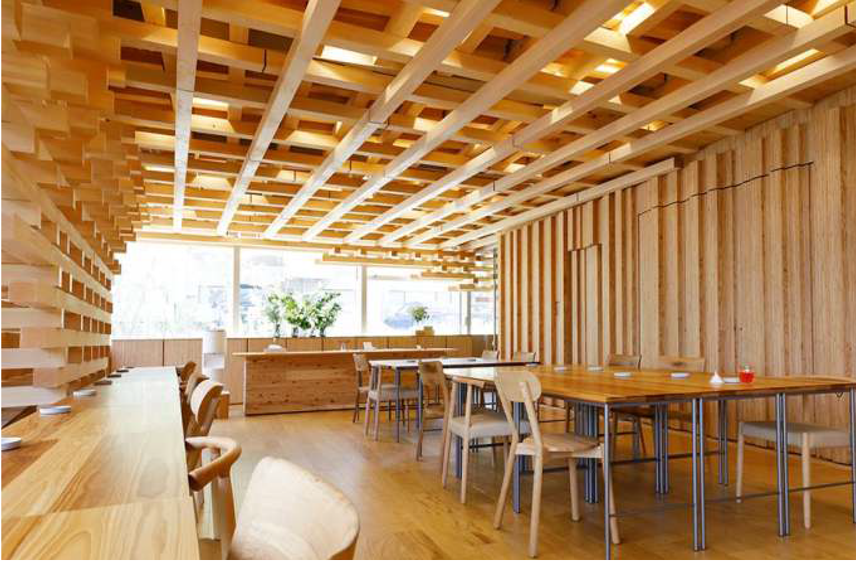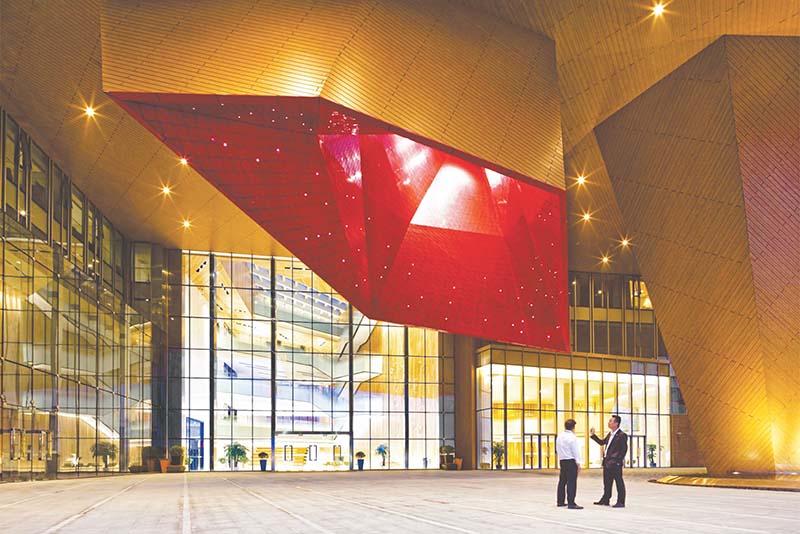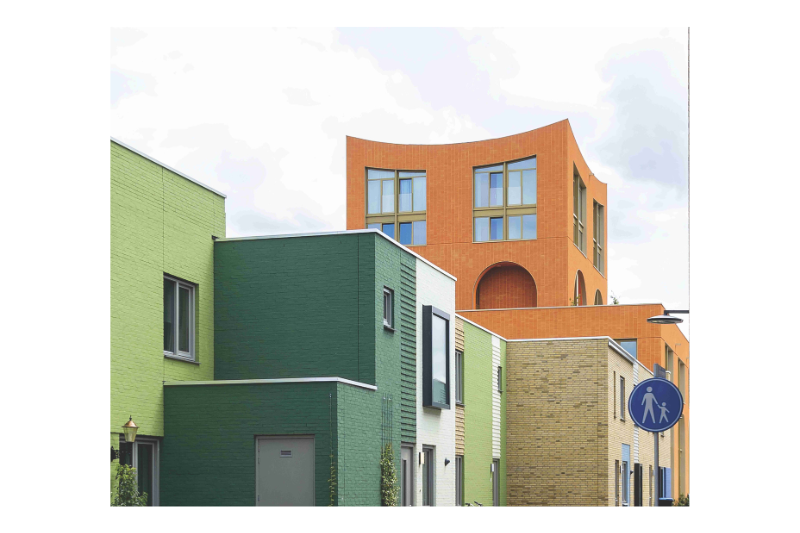A Breath of Fresh Air
Fact File
Project Name : AEAJ Green Terrace
Location : Shibuya, Japan
Building Function: Institutional Buildings
Architects: Kengo Kuma & Associates
Design Team: Minoru Yokoo, Yutaro Ota, Nanako Adachi, Yohei Mochizuki, Fumiya Kaneko, Yoo Shiho, Kyoko Mase
Area : 491 m
Year: 2023
Photographs : Masaki Hamada (kkpo)
The main structure consists of a steel frame, but the dimensions of the steel members were reduced so that they were close to the small sections of the wood members in an attempt to blend in with the unique, delicate feeling of particles.
The terrace, with a structure like a balancing toy, has an open panoramic view of the Jingumae woods. One of the focal points of the design process consisted of combining small wood particles to create a structure with an ambiguous profile similar to an arts and crafts project in contrast to the Yoyogi National Gymnasium designed by Kenzo Tange, which can be seen across the railway tracks. AEAJ Green Terrace is a sensory escape from the bustling city. The Aroma Environment Association of Japan opened this establishment in Harajuku, 2023 to promote the mental and physical health of visitors, as well as the preservation of the natural environment, through the wonders of aromatherapy.
Inside, a web of wooden beams extends across the ceiling and walls. These have been strategically placed to allow light to gently pass through them and fill the space, like sunlight piercing through a dense forest—evoking an effect known in Japanese as komorebi.
Sustainable Construction
AEAJ selected Kuma because his vision for sustainable construction aligned with their environmental values. Kuma chose lumber harvested by thinning, a sustainable forestry method that selects younger trees, leaving more nutrients for stronger trees. In contrast to concrete, which is responsible for about 8% of carbon emissions worldwide, lumber absorbs enough carbon during its lifetime to offset emissions produced by transportation. They further reduced transportation emissions by sourcing trees from nearby prefectures.
The outside of the facility is decorated with reuse in mind. Recycled clay roof tiles, characteristic of Japanese architecture since the sixth century, are crushed and formed into the front walkway and recycled essential oil vials are crushed and reformed as art pieces which reflect sunlight in front of the building.
An aroma archive
Visiting the building itself is a sensory experience. The smell of Japanese cypress greets you upon walking in, and many more fragrances can be found within.
An aroma archive Visiting the building itself is a sensory experience.
The Aroma Laboratory has up to 300 aromas from around the world, allowing you to sample scents from yuzu, one of Japan's popular citrus fruits, to saro, a plant used by herbalists in western Madagascar. The Aroma Lounge has a rotating selection of blends on display, each inspired by well-known literary works such as The Little Prince.
You can see blend recipes collected in AEAJ's periodical. Back issues are included in the Aroma Library, which contains a collection of 1,400 books in multiple languages on subjects such as aroma, plants, and the science behind them. Visit the third floor terrace for a view out towards Yoyogi Gymnasium, or relax in the Aroma Lounge area on the first floor with a cup of AEAJ's original botanical tea.
The Aroma Corridor highlights biodiversity, and is home to around 43 species of plants, some of which provide the raw materials for essential oils. AEAJ is a non-profit organization and does not sell essential oils, but you will find plenty of places to buy essential oils in the shopping streets of Harajuku, just a short walk away.

-webp.webp)

-webp.webp)






.jpg)
.png)


-is-planning-a-₹20,000-crore-Battery-Energy---2025-08-06T111857.191-preview.webp)
-is-planning-a-₹20,000-crore-Battery-Energy---2025-08-06T111320.645-preview.webp)
-is-planning-a-₹20,000-crore-Battery-Energy---2025-08-06T110907.615-preview.webp)
-is-planning-a-₹20,000-crore-Battery-Energy---2025-08-06T110119.107-preview.webp)
-is-planning-a-₹20,000-crore-Battery-Energy---2025-08-06T105519.765-preview.webp)